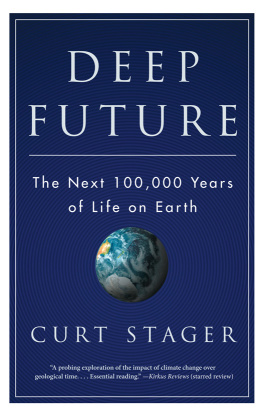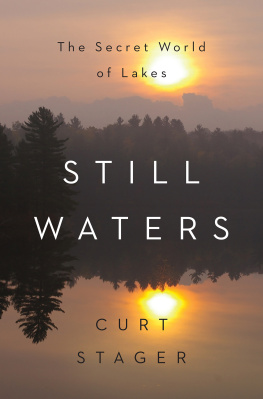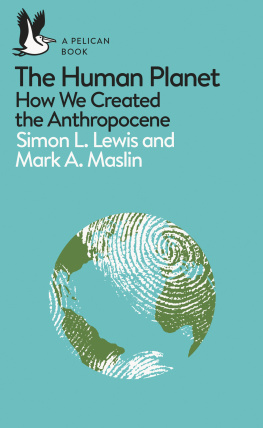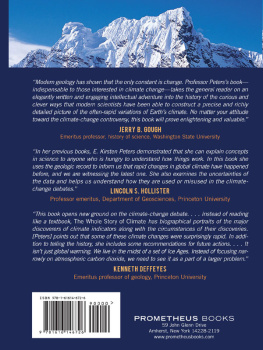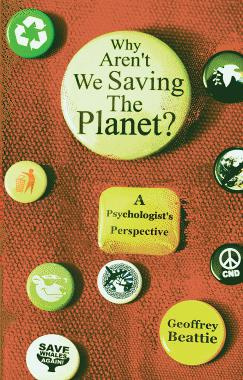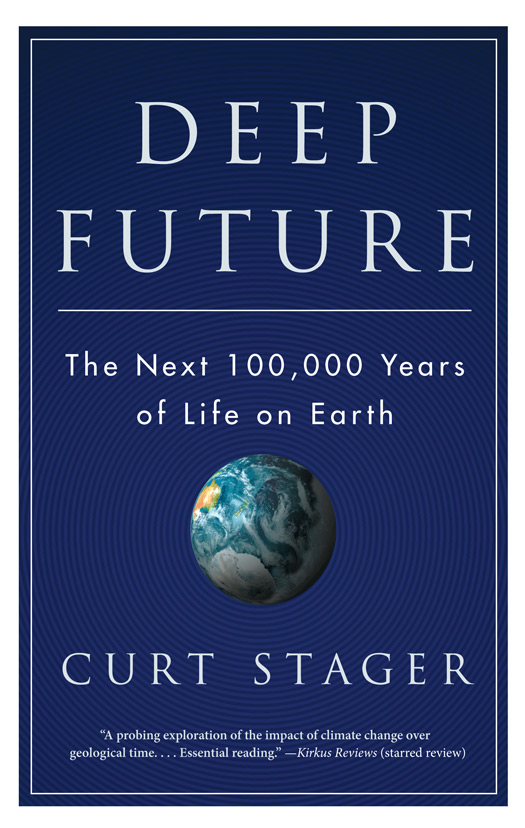Out of the earth has come a creature that has
changed the face of continents, that has
harnessed the forces of the earth and turned
them against themselves.
John Burroughs, Accepting the Universe
Welcome to the Age of Humans, a new chapter of Earths history whose name has already entered the lexicon of mainstream science.
Welcome to the end of the natural world as a realm that is somehow meaningfully distinct from humanity, thanks in large part to the worldwide carbon pollution that you and I have unwittingly helped to create and that will affect our descendants for many thousands of years, far longer than most of us yet realize.
And welcome to this peek beyond the curtain of 2100 AD , which currently marks the outer temporal limits of most thought and debate about modern climate change. As youll soon see, the environmental consequences of our actions today are so large, powerful, and long-lived that they cannot be fully understood from a mere century-scale point of view.
My aim in these pages is to introduce you to a broader perspective on global warming than the one most readers are familiar with, the one that considers long-term climate change to be a trend that merely stretches over several years or decades. People like Bill McKibben and Al Gore have brought the planetary scope of CO2 pollution to the attention of millions, but for most of us, the element of time has yet to be fully explored. David Archer, a farsighted climate modeler whose work I will introduce later in the book, has described the situation thus: The idea that anthropogenic CO2 release may affect the climate for hundreds of thousands of years has not yet reached general public awareness. The time has come to move on from unproductive, politicized arguments over global warming to the next stage of inquiry, where it is no longer a question of if it is happening but of when, how much, and for how long.
At first, it might seem strange that an environmental historian, or paleoecologist, like myself should be writing about future events like this. I read the stories of ecosystems that lie stacked in archives not of paper but of mud. My specialty is collecting layered core samples from the bottoms of lakes and bogs in the Adirondacks, Peru, and much of Africa, picking out the remains of microscopic organisms that once lived and died there and reconstructing past climates from the patterns of change they reveal. A layer of salt-loving algae tells me that the local climate was once dry enough to lower the lake level and turn the water brackish. A slug of pollen in another layer attests to wetter conditions that favored forests over deserts.
What a paleoecologist contributes most naturally to this prediction business is a sense of time. Much of what lies ahead of us has already happened before, and those of us with a long-term view of environmental history can often recognize familiar age-old processes in action today as well as likely consequences that may come as a result. We who combine the biological and geological sciences in our historical research also become used to thinking in broad terms that include both the living and nonliving worlds. But more to the point, we also think deep. For us, a century or millennium may be just an appetizer on the menu, and the duration of a single human lifetime is, statistically speaking, insignificant.
Thats not always a popular position, of course. A long view is not necessarily welcome to those who are preoccupied with events in the here and now, but it nonetheless offers potentially useful compass bearings for navigation in a complex and changing world. As a guide on this tour of the future, Ill look beyond the present moment to focus both forward and backward in time, bringing into view the nature of things to come as well as things that have long since been.
The relatively few scientists who have looked deeply into our future like this see the lingering climatic and ecological effects of fossil fuel carbon stretching well beyond the end of the twenty-first century. In order to follow their lines of sight through these pages, we will need to train the minds eye to take in tremendous sweeps of Earth history, both past and future. Much of what we learn here will come from geoscientists who speak of eras and epochs as the rest of us speak of seasons, people who share with the superrich a close working familiarity with the significance of terms like million and billion. To these professional time specialists, the Eocene and Pleistocene epochs are as real as World War II or the turbulent 1960s are to the rest of society, and they see in those long-gone ages some important lessons that can guide us as we struggle to understand what is happening around us today.
Before we go further in this quest, though, I would like to introduce you to a newly minted technical term thats currently striking resonant chords in the scientific community. At the moment, it still sounds foreign to most ears, but for those who are familiar with it the word represents an almost thrilling acknowledgment of our place in the grand arc of geologic time. Its modeled in the form of other major subdivisions of the fossil record that include what some call the Age of Fishes or the Age of Dinosaurs. Now that human influence has touched almost every cranny of the Earth, a new age has dawned, and it needs a formal name.
In the arcane lexicon of geological nomenclature, this age best qualifies as the latest in a string of episodes known as epochs that began 65 million years ago with the demise of the dinosaurs. You might have heard of them before, if youve spent much time learning about fossils. The post-dinosaur years began with the warm Paleocene, whose prefix paleo (Greek for ancient) refers to its great age relative to others that came later. Next came the even warmer Eocene, which saw the early-morning stages of modern mammal evolution. After skipping through three more epochs (Oligocene, Miocene, and Pliocene), each with a distinctive story of evolving life to tell, we find the Earth cooling down during the Pleistocene, and come, at last, to the climatically mild Holocene (recent whole), which began 11,700 years ago and traditionally includes the ever-advancing present.
But keep on the alert for a new epochal name that was recently bestowed upon this Age of Humans. No, its not the Plasticene, though blogger Matt Dowling has indeed proposed that label with tongue planted firmly in cheek. Partial credit for promoting the new name goes to atmospheric chemist and Nobel laureate Paul Crutzen, but it actually originated with aquatic ecologist Eugene Stoermer. Now an emeritus scholar at the University of Michigan, Stoermer recently told me that his catchy term spread informally through the scientific grapevine before appearing in print several years ago under the joint authorship of Crutzen and himself.
I cant remember exactly how it first came to mind, he recalled, chuckling like a pleased but somewhat surprised parent whose kid has grown up to become a celebrity. I used it in conferences here and there, and it eventually caught peoples attention. Thats not surprising, though, because Stoermers term neatly defines these and near-future times as indelibly marked by anthropogenic, or human-generated impacts, and its seeping more and more comfortably into the writings and speech of scientists and lay folk around the world.

